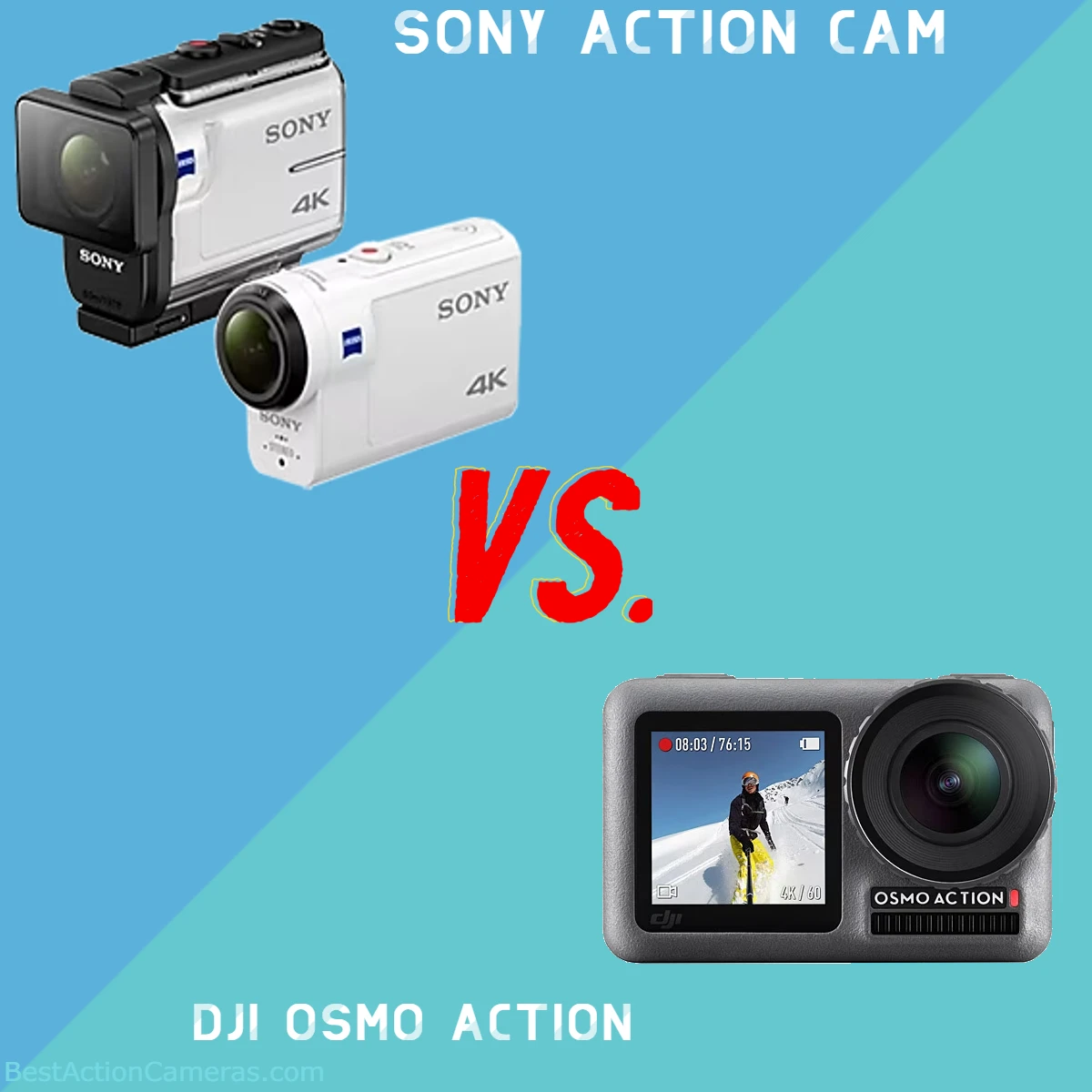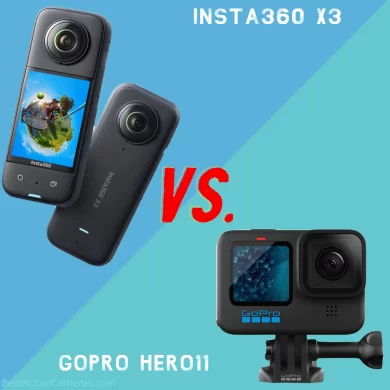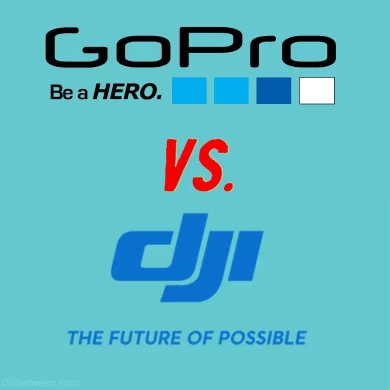
Action cameras are the perfect companions for capturing life’s heart-pounding moments, from mountain treks to water sports and everything in between. Our contenders, the DJI Osmo Action and the Sony Action Cam, each bring their own unique strengths to the table. The Osmo Action flaunts its dual-screen design, offering you a nifty front-facing screen for vlogging and framing yourself while recording. On the other hand, the sleek and compact Sony Action Cam brings a flip-out LCD to the party, allowing you to frame your shots with ease. But that’s just the beginning of our adventure! From video quality and low-light performance to audio prowess and extra features, we’ll leave no stone unturned in our quest to help you find the perfect action camera match for your daring exploits. So, grab your gear, and let’s make sure you end your blog with absolute clarity on your next action cam companion!
| Feature | DJI Osmo Action | Sony Action Cam |
|---|---|---|
| Design and Build Quality | Rectangular shape, dual-screen design (2.25″ rear touchscreen and 1.4″ front-facing screen), dustproof, shockproof, and waterproof design | Sleek and compact design with a flip-out LCD, comes with waterproof housing |
| Video Quality and Stabilization | 4K video up to 60fps, high video bitrate, HDR video mode, RockSteady image stabilization | 4K video up to 30fps, electronic image stabilization (EIS) |
| Low-Light Performance | Larger image sensor, wide aperture, impressive low-light performance | Good low-light performance, but may not match the Osmo Action’s capabilities |
| Audio Quality | Dual built-in microphones with RockSteady Audio for noise reduction | Built-in stereo microphone with decent audio quality |
| Battery Life | Removable battery, around 1.5 to 2 hours of continuous 4K recording | Removable battery, around 1.5 to 2 hours of continuous 4K recording |
| Storage Options | MicroSD card support, expandable up to 256GB | MicroSD card support, expandable up to 256GB |
| Features and Functions | Dual-screen design, customizable “Quick Switch” button, FPV mode | GPS capabilities (on some models), Sony’s proprietary “SteadyShot” feature |
| Price and Availability | Tends to be on the higher end of the price spectrum, available through DJI’s official website and authorized retailers | Competitive price range, available through Sony’s official website and various electronics retailers |
Differences Between DJI (Osmo Action) vs Sony (Sony Action Cam)
Design and Build Quality
When it comes to action cameras, durability and portability are crucial factors. Both the DJI Osmo Action and the Sony Action Cam boast robust builds that can handle the challenges of the great outdoors.
DJI Osmo Action: With a rectangular shape, the Osmo Action fits comfortably in the palm of your hand. It features a protective coating that is dustproof, shockproof, and waterproof down to a certain depth. This makes it ideal for water sports enthusiasts who love to dive into the depths without worrying about their camera. The dual-screen design is a standout feature of the Osmo Action. Not only does it sport a 2.25-inch rear touchscreen, but it also has a 1.4-inch front-facing display, which is perfect for vloggers or those who like to frame themselves while recording. The front screen is a unique advantage over many other action cameras on the market.
Sony Action Cam: Sony offers a sleek and compact design with its Action Cam series. It’s slender and can easily fit in your pocket, making it great for on-the-go adventurers. The Action Cam also comes with waterproof housing that allows it to be submerged to a certain depth. While it doesn’t have a dual-screen setup like the Osmo Action, it does come with a flip-out LCD that helps you frame shots when recording yourself.
Both cameras offer sturdy and practical designs, but the Osmo Action’s front-facing screen is a notable feature that sets it apart, especially for content creators who value seeing themselves while filming.
Video Quality and Stabilization
One of the most critical factors in an action camera is its ability to capture high-quality videos with smooth footage, even in the most intense situations. Let’s see how the DJI Osmo Action and the Sony Action Cam fare in this department.
DJI Osmo Action: The Osmo Action shines when it comes to video quality. It can shoot 4K video at up to 60 frames per second (fps), which results in detailed and cinematic footage. Additionally, it boasts a high video bitrate, which means less compression and more information retained in the video files. This results in better post-processing capabilities. The Osmo Action’s HDR (High Dynamic Range) video mode also helps capture more balanced footage in high-contrast scenes.
Stabilization is another area where the Osmo Action excels. DJI’s RockSteady technology ensures smooth, jitter-free videos, even during intense action. Whether you’re mountain biking, skiing, or skateboarding, your footage will look professional and steady.
Sony Action Cam: Sony’s Action Cam series is no slouch either. It also shoots 4K video, but at a slightly lower frame rate compared to the Osmo Action, typically up to 30fps. While this is still impressive and results in sharp videos, the lower frame rate may not be as ideal for capturing extremely fast-paced action. Sony’s camera also offers electronic image stabilization (EIS), which helps reduce shake and vibrations in videos, but it may not be as advanced as DJI’s RockSteady.
If you prioritize top-notch video quality and exceptional stabilization, the DJI Osmo Action might be the better option for you. However, the Sony Action Cam still offers excellent video capabilities for most adventurers.
Low-Light Performance
Adventures don’t always happen in broad daylight. Often, the most exhilarating experiences occur during dusk or dawn, or even under the stars. Let’s see how these action cameras handle low-light conditions.
DJI Osmo Action: The Osmo Action impresses with its low-light performance. It uses a larger image sensor compared to some other action cameras, which allows it to capture more light and produce better results in dimly lit environments. The camera’s wide aperture also contributes to improved low-light capabilities. While noise may still be present in extremely dark situations, the Osmo Action strikes a commendable balance between preserving details and managing noise levels.
Sony Action Cam: Sony’s Action Cam performs well in moderate low-light conditions, but it may not match the Osmo Action’s low-light prowess. With a slightly smaller sensor and different imaging technology, it may struggle a bit more in darker environments. However, for most outdoor adventures, it should still capture decent footage during low-light moments.
If you often find yourself exploring during the magic hours of dawn and dusk, or if you want to capture stunning night-time adventures, the DJI Osmo Action might be the better choice due to its superior low-light capabilities.
Audio Quality
Great video isn’t complete without excellent audio. Let’s see how these action cameras handle sound recording.
DJI Osmo Action: The Osmo Action features dual built-in microphones that capture stereo audio. This setup helps in recording immersive sound that complements your videos. Moreover, the camera comes with a unique feature called “RockSteady Audio,” which uses complex algorithms to reduce background noise and wind distortion, ensuring your audio remains clear and distortion-free even in noisy environments.
Sony Action Cam: Sony’s Action Cam also offers decent audio quality with its built-in stereo microphone. It records clear audio in most situations, but it may not have the advanced noise reduction features that the Osmo Action provides.
If audio quality is a top priority for your action-packed videos, the DJI Osmo Action’s RockSteady Audio and superior noise reduction capabilities might give it the edge.
Battery Life and Storage
When you’re out on thrilling adventures, the last thing you want is your action camera running out of juice or storage space. Let’s see how the DJI Osmo Action and the Sony Action Cam fare in terms of battery life and storage options.
DJI Osmo Action: The Osmo Action offers a removable battery, which means you can carry spare batteries to extend your shooting time. On average, a fully charged battery can last for around 1.5 to 2 hours of continuous 4K video recording. As for storage, the Osmo Action accepts microSD cards, and the storage capacity can be expanded up to 256GB, allowing you to capture hours of high-quality footage without worries.
Sony Action Cam: Sony’s Action Cam also comes with a removable battery, and its battery life is similar to the Osmo Action, lasting around 1.5 to 2 hours of continuous 4K recording. For storage, it also supports microSD cards with capacities up to 256GB.
Both cameras offer comparable battery life and storage options, ensuring you have enough power and space to document your exciting escapades.
Features and Extra Functions
Beyond the core functionalities, action cameras often come with unique features and extra functions that enhance the overall shooting experience. Let’s explore some additional goodies offered by the DJI Osmo Action and the Sony Action Cam.
DJI Osmo Action: One of the standout features of the Osmo Action is its dual-screen design. As mentioned earlier, having a front-facing screen is incredibly useful for vloggers or anyone who wants to ensure they’re perfectly framed in their shots. The Osmo Action also has a customizable “Quick Switch” button on the side, allowing you to quickly toggle between various shooting modes and settings. Additionally, it offers an FPV (First Person View) mode, which tilts the camera angle for a dynamic perspective.
Sony Action Cam: Sony’s Action Cam offers its unique set of features. Some models come with GPS capabilities, which can be handy for tracking your location during outdoor activities. Sony also includes a proprietary “SteadyShot” feature for image stabilization, which, while not as advanced as DJI’s RockSteady, still helps produce smooth footage.
Ultimately, the choice between the two may come down to your specific needs and preferences. If having a front-facing screen is a game-changer for you, the DJI Osmo Action could be the better pick. On the other hand, if you value GPS functionality and prefer Sony’s SteadyShot technology, the Sony Action Cam might be more appealing.
Price and Availability
Now, let’s talk about the price aspect—the most critical factor for many potential buyers.
DJI Osmo Action: Being a renowned brand in the drone and camera industry, DJI’s products often come with a premium price tag. The Osmo Action, while feature-packed, tends to be on the higher end of the action camera price spectrum. Availability may also vary, but you can typically find it through DJI’s official website and authorized retailers.
Sony Action Cam: Sony, being a well-established electronics giant, also offers its Action Cam at a competitive price. Depending on the model and its features, Sony’s action cameras can sometimes be more budget-friendly compared to the DJI counterpart. You can find them through Sony’s official website and various electronics retailers.
Before making a decision, it’s essential to consider your budget and the features that matter most to you. If you’re willing to invest in advanced features and exceptional video quality, the DJI Osmo Action could be worth the extra bucks. However, if you’re looking for a more budget-friendly option that still delivers excellent performance, the Sony Action Cam might be the way to go.
Conclusion: DJI Osmo Action or Sony Action Cam
Both the DJI Osmo Action and the Sony Action Cam are excellent choices for adventurers seeking to capture their thrilling moments in stunning detail. Each Action camera comes with its own set of strengths and unique features, making it crucial to weigh your preferences and needs.
Choose the DJI Osmo Action if:
- You prioritize top-notch video quality, especially in low-light conditions.
- You want advanced image stabilization with RockSteady technology.
- Having a front-facing screen for vlogging and self-framing is essential to you.
- You’re willing to invest a bit more for premium features and build quality.
Choose the Sony Action Cam if:
- You’re looking for a budget-friendly option without compromising on video quality.
- GPS functionality is important for tracking your adventures.
- You prefer Sony’s SteadyShot image stabilization technology.
- You want a sleek and compact design that easily fits in your pocket.
In the end, both cameras are capable of capturing amazing footage, and your choice will depend on what matters most to you as an adventurer and content creator. Whichever action camera you go for, may it accompany you on countless exciting journeys, capturing the essence of your adventures for years to come!
FAQs
Both the DJI Osmo Action and Sony Action Cam offer impressive video quality, shooting 4K footage. However, the Osmo Action takes the lead with its ability to shoot 4K at 60 frames per second (fps), resulting in smoother and more detailed videos.
No, the Sony Action Cam doesn’t have a front-facing screen. It features a flip-out LCD that helps you frame shots while recording, but you won’t be able to see yourself when vlogging.
The DJI Osmo Action is renowned for its low-light performance. With a larger image sensor and wide aperture, it excels in capturing clear and detailed footage even in dimly lit environments.
The DJI Osmo Action takes the lead in image stabilization with its advanced RockSteady technology. It ensures smooth, jitter-free footage, even during intense action. While the Sony Action Cam also has image stabilization, it may not be as advanced as DJI’s RockSteady.
Yes, both the DJI Osmo Action and Sony Action Cam are designed to withstand underwater adventures. They come with waterproof housings that allow them to be submerged to a certain depth, making them perfect companions for water sports enthusiasts.
The DJI Osmo Action shines in the audio department with its dual built-in microphones and RockSteady Audio feature, which reduces background noise and wind distortion. The Sony Action Cam also offers decent audio quality with its built-in stereo microphone.
Yes, both the DJI Osmo Action and the Sony Action Cam come with removable batteries. You can purchase spare batteries to extend your shooting time during long adventures.
Yes, the DJI Osmo Action offers a dual-screen design and a customizable “Quick Switch” button, while the Sony Action Cam on certain models comes with GPS capabilities for location tracking during outdoor activities.
The DJI Osmo Action tends to be on the higher end of the price spectrum due to its premium features and build quality. On the other hand, Sony’s Action Cam series offers competitive price ranges, making it a more budget-friendly option.
Both the DJI Osmo Action and the Sony Action Cam are available through their respective official websites and authorized retailers. You can also find them at various electronics retailers both online and in physical stores.
Contents



